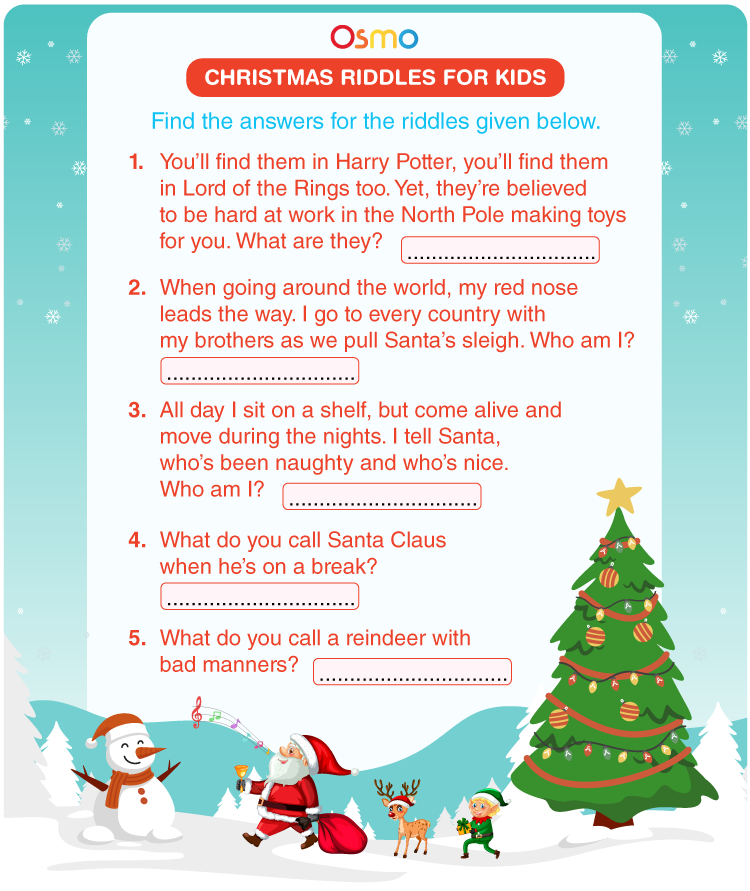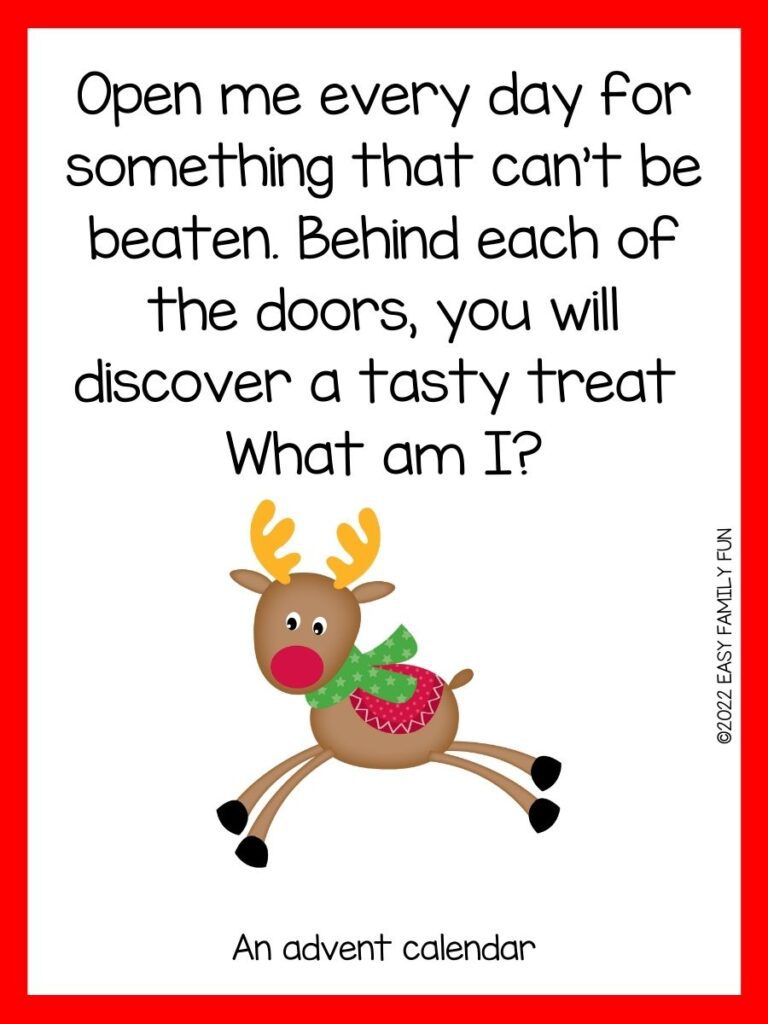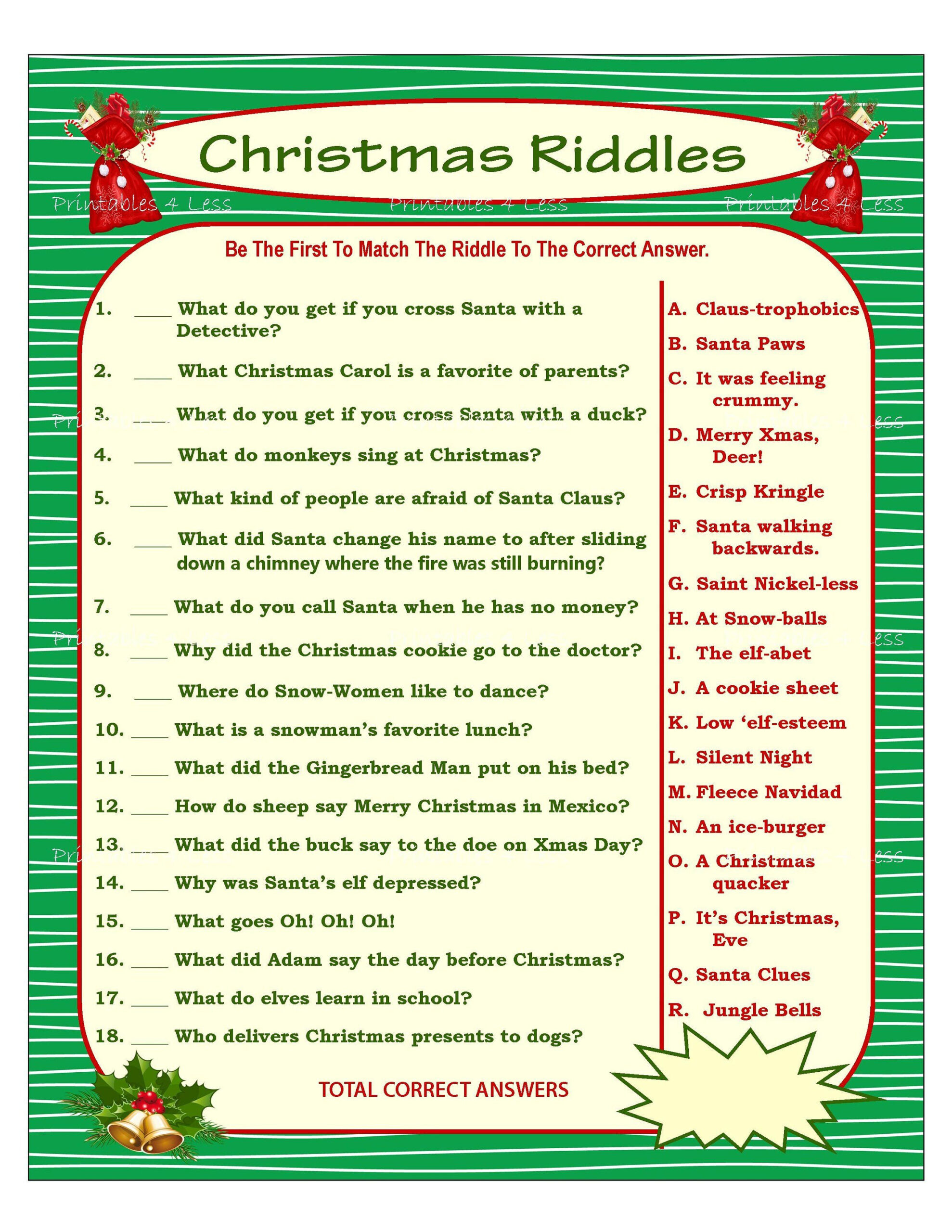The Joy of Learning: Christmas Riddles in Preschool
Related Articles: The Joy of Learning: Christmas Riddles in Preschool
Introduction
With great pleasure, we will explore the intriguing topic related to The Joy of Learning: Christmas Riddles in Preschool. Let’s weave interesting information and offer fresh perspectives to the readers.
Table of Content
The Joy of Learning: Christmas Riddles in Preschool

Christmas is a time for celebration, joy, and togetherness. For preschoolers, it’s a magical season filled with wonder and excitement. One engaging activity that can enhance this festive experience while fostering cognitive development is the use of Christmas riddles.
The Significance of Riddles in Early Childhood Education
Riddles, particularly those tailored for preschoolers, are more than just a fun pastime. They serve as valuable tools in early childhood education, contributing to a child’s overall development in several ways:
- Language Development: Riddles encourage children to think about words, their meanings, and how they relate to each other. They stimulate vocabulary growth and improve verbal fluency, as children learn to express themselves clearly and concisely.
- Critical Thinking Skills: Solving riddles requires children to analyze information, identify patterns, and make deductions. This process sharpens their critical thinking skills, helping them to approach problems logically and creatively.
- Problem-Solving Abilities: Riddles present a challenge that needs to be overcome. Children learn to break down complex problems into smaller, more manageable parts, enhancing their problem-solving skills.
- Imagination and Creativity: Riddles often involve imaginative scenarios and abstract concepts. They encourage children to think outside the box, fostering their creativity and imagination.
- Memory and Concentration: Remembering clues and using them to deduce the answer requires focus and concentration. Riddles help children develop these skills, improving their ability to pay attention and retain information.
- Social Interaction: Sharing riddles and working together to solve them promotes social interaction and teamwork among children. This fosters a sense of community and encourages collaboration.
Christmas Riddles: A Festive Learning Experience
Christmas riddles, with their festive themes and imagery, offer a unique opportunity to engage preschoolers in learning while celebrating the season. They provide a fun and interactive way to introduce children to holiday traditions, vocabulary, and concepts.
Types of Christmas Riddles for Preschoolers
Preschool Christmas riddles should be age-appropriate, focusing on simple concepts and familiar objects. Here are some categories:
- Object Riddles: These riddles describe a specific object associated with Christmas, such as a tree, a stocking, or a gift.
- Character Riddles: These focus on Christmas characters like Santa Claus, elves, or reindeer.
- Action Riddles: These riddles describe an action related to Christmas, such as decorating a tree or opening presents.
- Holiday Tradition Riddles: These riddles focus on Christmas traditions, like singing carols or making gingerbread cookies.
Examples of Christmas Riddles for Preschoolers:
- I am tall and green, with lights and ornaments. What am I? (Answer: A Christmas tree)
- I wear a red suit and have a white beard. What am I? (Answer: Santa Claus)
- I fly through the sky and pull Santa’s sleigh. What am I? (Answer: A reindeer)
- I am a sweet treat that is shaped like a house. What am I? (Answer: A gingerbread house)
- We sing them during Christmas time. What are they? (Answer: Christmas carols)
Tips for Using Christmas Riddles in Preschool
- Keep it Simple: Choose riddles with simple vocabulary and concepts that are easy for preschoolers to understand.
- Use Visual Aids: Show pictures or objects related to the riddles to help children visualize the answers.
- Encourage Participation: Let children take turns guessing the answers and provide positive reinforcement for their efforts.
- Make it Interactive: Use props, actions, or songs to make the riddle-solving experience more engaging.
- Connect to Learning Objectives: Integrate riddles into various learning activities, such as language arts, math, or science.
FAQs About Christmas Riddles in Preschool
-
Q: How can I make Christmas riddles more engaging for preschoolers?
- A: Incorporate interactive elements, like acting out the riddles, using props, or playing music.
-
Q: Are there any resources for finding age-appropriate Christmas riddles?
- A: Numerous websites, books, and educational resources offer collections of Christmas riddles for preschoolers.
-
Q: Can Christmas riddles be used to teach other subjects besides language arts?
- A: Yes, riddles can be integrated into various subjects like math (counting ornaments), science (learning about reindeer), or social studies (exploring Christmas traditions).
-
Q: What are some benefits of using Christmas riddles in a preschool setting?
- A: They enhance language development, critical thinking skills, problem-solving abilities, and imagination.
Conclusion
Christmas riddles offer a joyful and engaging way to foster learning and development in preschoolers. They provide a festive opportunity to stimulate language skills, critical thinking, and creativity while celebrating the spirit of the season. By incorporating these festive puzzles into educational activities, preschool educators can create a fun and enriching learning experience for young children.







Closure
Thus, we hope this article has provided valuable insights into The Joy of Learning: Christmas Riddles in Preschool. We thank you for taking the time to read this article. See you in our next article!
